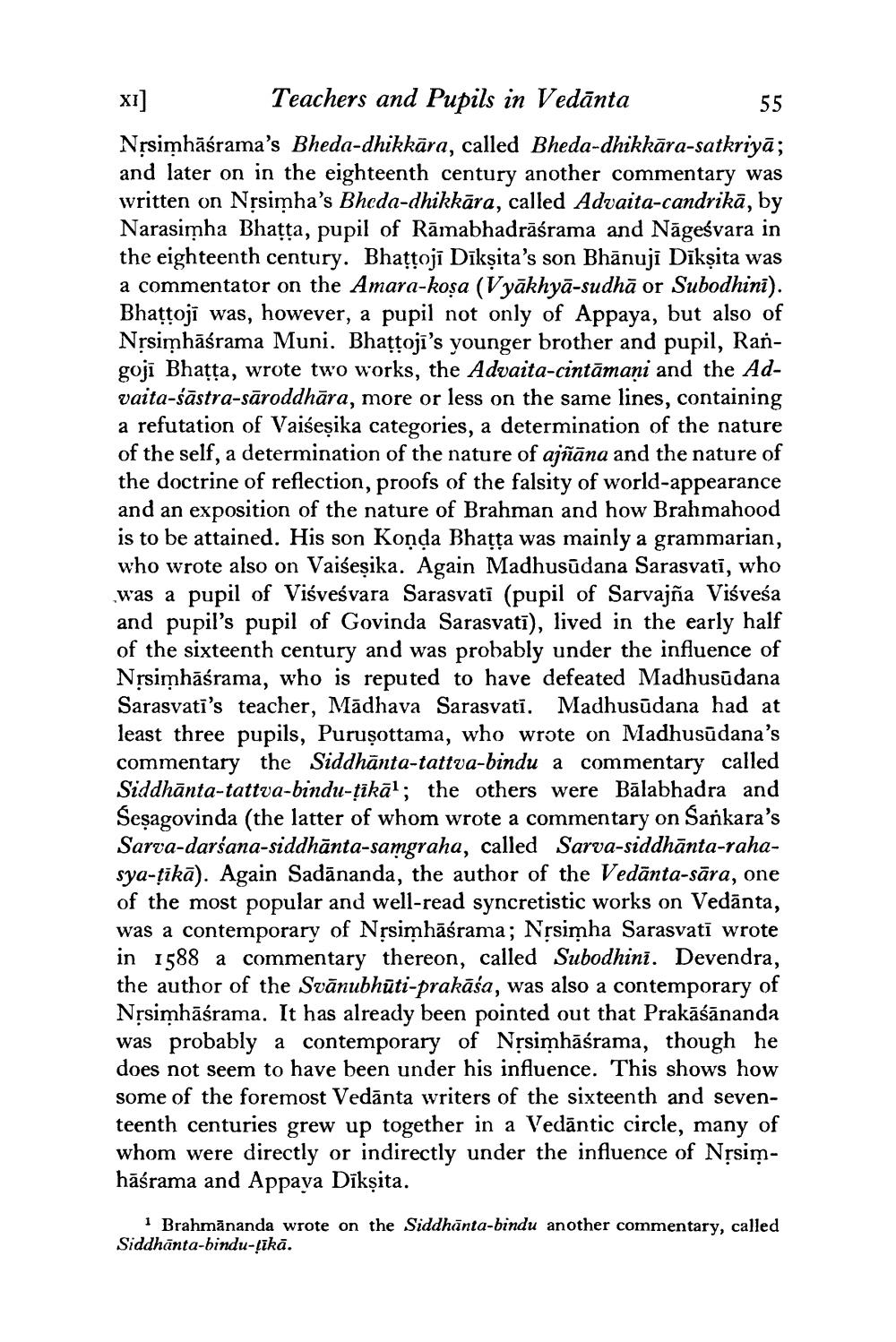________________
XI]
55
Teachers and Pupils in Vedānta Nțsimhāśrama's Bheda-dhikkāra, called Bheda-dhikkāra-satkriyā; and later on in the eighteenth century another commentary was written on Nșsimha's Bheda-dhikkāra, called Advaita-candrikā, by Narasimha Bhatta, pupil of Rāmabhadrāśrama and Nāgeśvara in the eighteenth century. Bhattoji Dikșita's son Bhānuji Dikșita was a commentator on the Amara-koşa (Vyākhyā-sudhā or Subodhini). Bhattoji was, however, a pupil not only of Appaya, but also of Nộsimhāśrama Muni. Bhattoji's younger brother and pupil, Rangoji Bhațța, wrote two works, the Advaita-cintāmaņi and the Advaita-śāstra-sāroddhāra, more or less on the same lines, containing a refutation of Vaiseșika categories, a determination of the nature of the self, a determination of the nature of ajñāna and the nature of the doctrine of reflection, proofs of the falsity of world-appearance and an exposition of the nature of Brahman and how Brahmahood is to be attained. His son Konda Bhațţa was mainly a grammarian, who wrote also on Vaiseșika. Again Madhusūdana Sarasvati, who was a pupil of Viśveśvara Sarasvati (pupil of Sarvajña Viśveśa and pupil's pupil of Govinda Sarasvati), lived in the early half of the sixteenth century and was probably under the influence of Nrsimhāśrama, who is reputed to have defeated Madhusūdana Sarasvati's teacher, Madhava Sarasvati. Madhusūdana had at least three pupils, Puruşottama, who wrote on Madhusūdana's commentary the Siddhānta-tattva-bindu a commentary called Siddhānta-tattva-bindu-țīkāl; the others were Bālabhadra and Seșagovinda (the latter of whom wrote a commentary on Sankara's Sarva-darśana-siddhānta-samgraha, called Sarva-siddhānta-rahasya-ţikā). Again Sadānanda, the author of the Vedānta-sāra, one of the most popular and well-read syncretistic works on Vedānta, was a contemporary of Nrsimhāśrama; Nrsimha Sarasvati wrote in 1588 a commentary thereon, called Subodhini. Devendra, the author of the Svānubhūti-prakāśa, was also a contemporary of Nșsimhāśrama. It has already been pointed out that Prakāśānanda was probably a contemporary of Nýsimhāśrama, though he does not seem to have been under his influence. This shows how some of the foremost Vedānta writers of the sixteenth and seventeenth centuries grew up together in a Vedāntic circle, many of whom were directly or indirectly under the influence of Nșsimhāśrama and Appava Dikṣita.
1 Brahmānanda wrote on the Siddhānta-bindu another commentary, called Siddhānta-bindu-ţikā.




